Solving Cannabis Hyperemesis Syndrome | How Cannabinoids Regulate Nausea | FPS#5
Why do cannabinoids in cannabis cause nausea and vomiting in some people but not others? Is this limited to heavy users, Recreational users, medicinal cannabis patients? In this episode, FPS ventures into the unknown on the very under-researched area of Cannabinoid Hyperemesis Syndrome. In this episode neuroscience PhD candidate Marieka Devuono joins us to speak about her recently published manuscript that addresses these controversial concepts, entitled "Conditioned gaping produced by high dose Δ9-tetrahydracannabinol: Dysregulation of the hypothalamic endocannabinoid system", published in Neurophamacology [2018 Oct;141:272-282. doi: 10.1016/j.neuropharm.2018.08.039].
Link: https://linkinghub.elsevier.com/retrieve/pii/S0028-3908(18)30598-7
Highlights
• High doses of THC produce nausea-induced conditioned gaping.
• THC-induced conditioned gaping was mediated by its action on the CB1 receptor.
• 10 mg/kg THC produced upregulation of genes related to the 2-AG degrading enzyme, MAGL in the hypothalamus.
• High doses of THC may produce stress-induced nausea by dysregulation of endocannabinoid function in the hypothalamus.
Abstract
Δ9-tetrahydracannabinol (THC) is recognized as an effective treatment for nausea and vomiting via its action on the cannabinoid 1 (CB1) receptor. Paradoxically, there is evidence that THC can also produce nausea and vomiting. Using the conditioned gaping model of nausea in rats, we evaluated the ability of several doses of THC (0.0, 0.5, 5 and 10 mg/kg, i.p.) to produced conditioned gaping reactions. We then investigated the ability of the CB1 receptor antagonist, rimonabant, to block the establishment of THC-induced conditioned gaping. Real-time polymerase chain reaction (RT-PCR) was then used to investigate changes in endocannabinoid related genes in various brain regions in rats chronically treated with vehicle (VEH), 0.5 or 10 mg/kg THC. THC produced dose-dependent gaping, with 5 and 10 mg/kg producing significantly more gaping reactions than VEH or 0.5 mg/kg THC, a dose known to have anti-emetic properties. Pre-treatment with rimonabant reversed this effect, indicating that THC-induced conditioned gaping was CB1 receptor mediated. The RT-PCR analysis revealed an upregulation of genes for the degrading enzyme, monoacylglycerol lipase (MAGL), of the endocannabinoid, 2-arachidolyl glycerol (2-AG), in the hypothalamus of rats treated with 10 mg/kg THC. No changes in the expression of relevant genes were found in nausea (interoceptive insular cortex) or vomiting (dorsal vagal complex) related brain regions. These findings support the hypothesis that THC-induced nausea is a result of a dysregulated hypothalamic-pituitary-adrenal axis leading to an overactive stress response.
Keywords
THC Conditioned gaping Endocannabinoid system Hypothalamus Nausea.
Use Filmora To Create Great Quality Videos - 20% off Link: http://tiny.cc/b86pkz
___________________________________________________________________________________
Interested in cutting-edge neuroscience research? Tired of exciting information being hidden behind those pesky paywalls? Introducing the First-Person Science Podcast: The 1st and only podcast dedicated to in-depth exploration of neuroscience research articles with first-hand perspectives and narratives from the authors themselves.
FPS introduces a new way to discover and engage with neuroscience research. We aim to break-down barriers to science communication by explaining jargon and complicated concepts in entertaining and succinct ways in a ‘journal club’ style to encourage collaboration and discussion between scientists and the public, alike.
Listeners can expect to learn cool facts and get a general background for everything related to the episode's journal article through a visually immersive ‘journal club’ approach to the podcast, Ft. narratives and first-person perspectives from the authors/scientists themselves. It's a fine line to manage, but we're doing our best! And the more feedback from people from all levels of background/understanding, the better!
Listen to our podcast on itunes, spotify, or wherever you get your podcasts. Direct audio download link: https://firstpersonscience.podbean.com
RSS Feed: https://feed.podbean.com/firstpersonscience/feed.xml
Follow us on Twitter to stay up to date on the latest research: @firstpersonsci
Facebook: https://www.facebook.com/First-Person-Science-106183617589132/
Instagram: https://www.instagram.com/firstpersonsciencepodcast/
Interested in increasing exposure for your published research? Curious about becoming involved with the show? Email us: firstpersonsciencepod@gmail.com.
Produced by Roger Hudson, PhDc
-
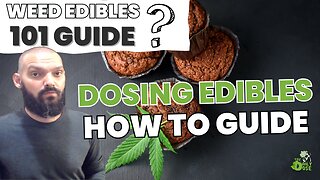 4:52
4:52
News And Media
1 year agoCannabis Edibles Guide What To Know Now
116 -
 7:28
7:28
tErPwErKz710
1 year agoModern Cannabis SUPERSTRAINS😱UNINTENDED Fx Of Cannhibition-TIPING THE SCALES W/THC & Beta Myrcene
215 -
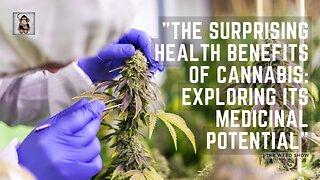 3:37
3:37
Stoned Traders Club
6 months agoThe Surprising Health Benefits of Cannabis: Exploring its Medicinal Potential
1633 -
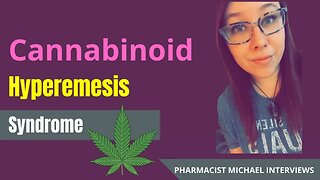 57:50
57:50
Pharmacist_Michael
11 months agoCannabinoid hyperemesis syndrome (CHS) | What is it?
11 -
 7:24
7:24
Canna-Facts with Hyd_Roman
8 months agoThe EXCITING WORLD of CANNABINOID METABOLITES
89 -
 53:00
53:00
tErPwErKz710
11 months agoIndependent Cannabinoids & Compounds VS Synergistic Interplay of The Endocannabinoids System
7752 -
 2:29
2:29
Cannabis's Premiere News Channel
4 months agoThe Potential of Cannabis to Treat PTSD #ptsd
19 -
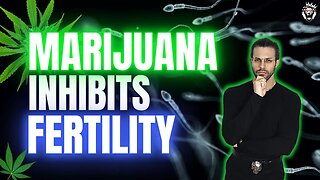 4:54
4:54
Leo & Longevity
2 months ago $0.04 earnedIs Cannabis Killing Your Balls?
57 -
 4:11
4:11
tErPwErKz710
1 year agoNon Therpeutic Cannabis - FDA & DEA Manipulation of the US Cannabis Market - Unintended Consequences
121 -
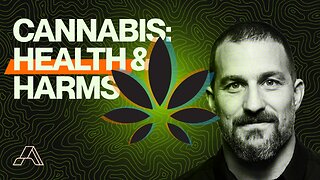 21:44
21:44
Arcane Society
8 months agoEverything You Need to Know About Cannabis | Andrew Huberman
12